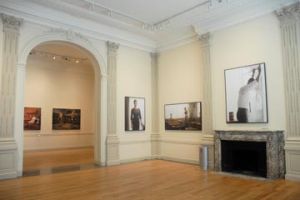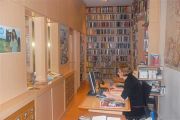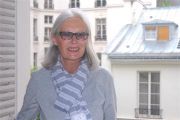 |

|
 Institut Néerlandais © T.Joly Institut Néerlandais © T.Joly

|
The Institut Neerlandais promotes the Dutch culture all over the year through exhibitions, concerts, screenings, literary debates and language courses. Nearly twenty Dutch expats and a dozen of French people work in this cultural institute that boasts rich collections of ancient books, paintings and drawings.
[ Practical ]
Institut Néerlandais
121 rue de Lille, 75007 Paris.
Opening times
- Library
Monday from 1 pm till 9 pm.
From Tuesday to Friday from 1 pm till 7 pm.
- Exhibitions
Every day except Monday from 1 pm till 7 pm.
Information
Tel : 0153591240
www.institutneerlandais.com
Founded in 1956 and opened in 1957, the Institut Néerlandais is one of the oldest foreign cultural institutes in Paris and one of the most remarkable. It owes its existence to Frits Lugt, one of the 20th century’s greatest Dutch collectors of ancient art and patrons of the arts. Having settled in Paris after the Second World War, in 1947 he created the foundation Custodia with the aim to make art accessible to the public.

 Floortje Damming, library © T.Joly Floortje Damming, library © T.Joly
|
 An important heritage An important heritage
Then, in 1953, he purchased two 18th and 19th century private mansions located near the Assemblée Nationale : the Hotel de Turgot, where lived this Minister of Louis XVI and briefly Madame de Staël, and the Hotel de Mirepoix. In the first one he set up his foundation, his collections and his library. In the second one he decided to open a centre dedicated to the development of cultural exchanges between France and the Netherlands that was soon named Institut Néerlandais.
Due to its origin, the Institute is distinguished from the other foreign cultural centres by the importance of its cultural heritage. It indeed possesses a library that is the largest in France about Dutch language and culture and the fourth largest about art, even containing 16th century Italian works. A treasure of 150 000 books written in Dutch, French and Italian that are accessible to everyone and available for consultation in the library. Except, of course, the oldest and the most fragile ones.
 Dutch, Italian and French drawings Dutch, Italian and French drawings
Besides, the Institute can also rely on the Custodia Foundation collections. Its jewel is a set of 90 000 items including Dutch, Italian and French drawings, engravings and paintings from the 17th, 18th and 19th centuries. In addition it also comprises old books, artists’ letters and a collection of blue and white Chinese porcelains from the Ming period. “This heritage is an exceptional asset that allows us to organize great exhibitions - for example on Rembrandt drawings in 2007 or on Rubens drawings in 2008 – because we can proceed to exchanges of loan with the world greatest museums”, explains Rudi Wester, the director of the Institute since fall 2003, also cultural counsellor of the Embassy, who considers that “ Culture is the most important thing in order to live well”. So it is not surprising to hear she likes to live in Paris. “For the opera, the large number of cinemas that allows you to watch movies from morning to evening,….”.

 Institut Néerlandais © T.Joly Institut Néerlandais © T.Joly
|
 Numerous exhibitions Numerous exhibitions
Formerly director of the Foundation for the Translation of Dutch Litterature and editor of a literary programme on the Dutch television, she participated in the organization of the 2003 Paris Book Fair when the honour guests were Flanders and the Netherlands.
Having as goal to show the richness of the Dutch culture and language, the Institute organises numerous events including five or six exhibitions per year. One or two are devoted to ancient art while three or four focus on all kind of contemporary art : plastic arts, photography, design,… They take place within the premises of the Institute that also host every year a dozen of jazz and classic concerts as well as literary evenings with Dutch and French authors of novels or essays and conferences / debates about historical and current subjects such as euthanasia, globalisation, slave trade,… Since I arrived I widened the scope of the tackled themes because I think it’s essential to extend the exchanges between France and the Netherlands”, adds Rudi Wester.
 Cultural salon Cultural salon
She also established a cultural salon where she receives artists and directors of institutions from both countries to favour encounters.
As to the Dutch cinema, it is highlighted by monthly screenings of documentary and fiction works and a week long festival.
Of course, the Institute also offers language courses, collective ones on the evening, individual ones at any time, as well as week long training courses for the ones who want to learn more quickly. Those courses are aimed to adults, to students preparing the Dutch option to the baccalaureat, and to children who count for 80 out of the 700 people following lessons. “In the past, people often learnt the language for private reasons, because they had a Dutch partner, today it’s often for professional purposes”, notices Rudi Wester. In addition, for three years the Institute has been offering language and intercultural management courses within different companies, for example at Air France following the merging with KLM.

 Elisabeth van Boetzelaer © T.Joly Elisabeth van Boetzelaer © T.Joly
|
 More interest in foreign cultures More interest in foreign cultures
“We explain what are the Netherlands, the geography, history and economy of the country as well as the inhabitants mentality and behaviour. Those information are linked to practical cases and allow a better understanding between the employees”, underlines Ed Hansen, teacher at the Institute for 11 years, who has been living in Paris for 15 years. “ I am fond of this vibrant and lively city where there is an intermingling of cultures and ages”.
Welcoming a large majority of French, Dutch and also other foreign expats, in particular for the concerts, the Institute employs 27 persons including 17 Dutch citizens, mainly the teachers and five persons in charge of the cultural events. Rudi Wester’s assistant, Elisabeth van Boetzalaer, works there since 1978. So she’s able to notice the changes that occurred over the years. “On one hand, our functioning has become more professional. On the other, the French people now show more interest in foreign cultures than in the past. Contemporary art exhibitions attract more people and the young ones learn more easily foreign languages”.
June 20, 2009
Thierry Joly 

|



